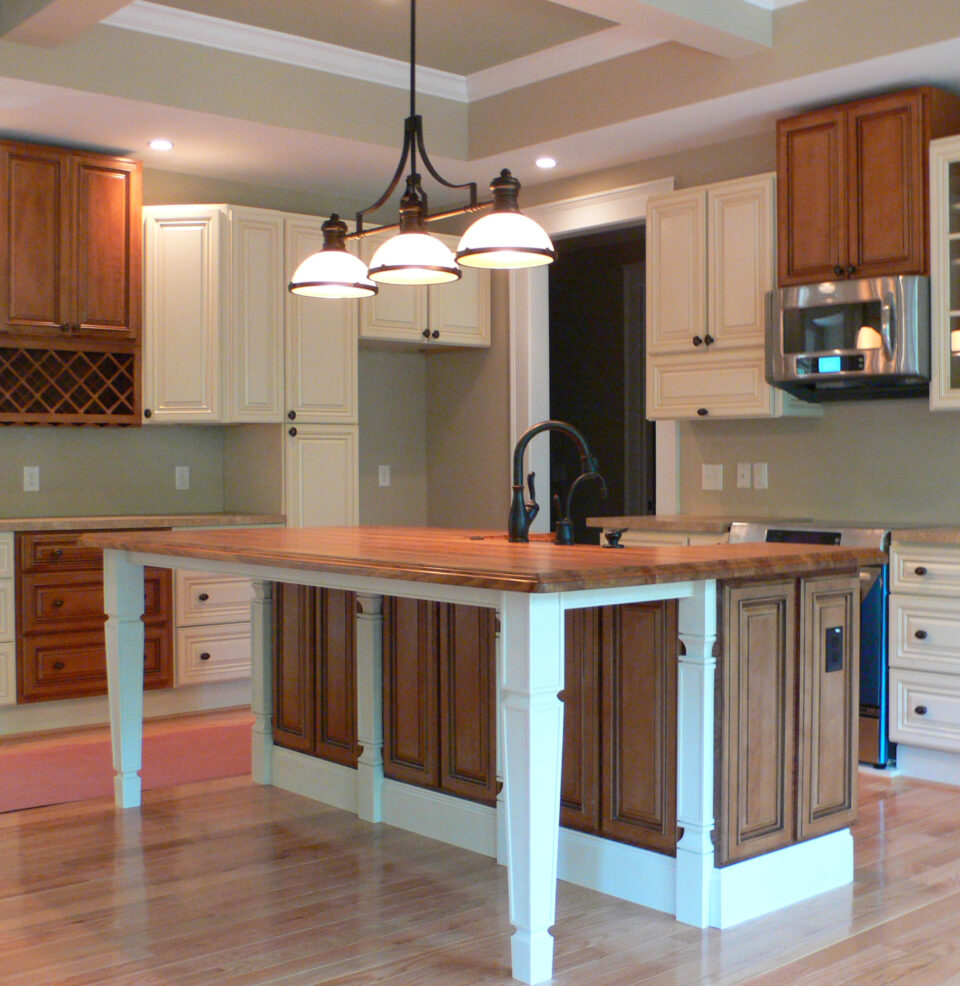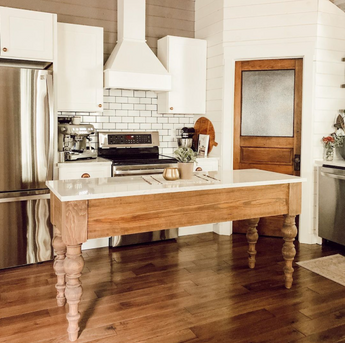Transform Your Space with Innovative Kitchen Island Leg Designs
Wiki Article
Discovering the Vital Features of a Kitchen Area Island Leg for Your Culinary Room
The kitchen island acts as a main center in any cooking area, and the option of leg design is pivotal in boosting both its performance and visual charm. Comprehending the important attributes of kitchen area island legs-- including product options, layout styles, and stability factors-- can substantially impact the total experience within the kitchen area. As we discover these aspects, we will certainly discover just how thoughtful personalization and devices can raise your kitchen island from a simple energy to a striking centerpiece. What specific considerations should be focused on to accomplish this equilibrium?Significance of Kitchen Area Island Legs
Cooking area island legs play a vital role in both the functionality and visual appeals of a kitchen area room. They not just sustain the weight of the island but likewise improve the total layout, contributing to the kitchen's visual charm. The option of legs can determine the design of the cooking area, be it modern, conventional, or rustic.Functionally, durable and appropriately made legs ensure stability, enabling the safe use the island for different jobs such as food prep work, eating, or enjoyable. Strong legs prevent shifting and wobbling, offering a trustworthy surface area for day-to-day tasks.
In addition, the elevation and positioning of the legs can influence the comfort level for those seated at the island. A well-considered height can accommodate bar stools or chairs, promoting a welcoming atmosphere for events.
In enhancement to these functional factors to consider, cooking area island legs can work as a centerpiece in the room (kitchen island leg). Ornamental or distinctly designed legs can elevate the style visual, making the island a focal point. Hence, selecting the right kitchen island legs is essential for balancing form and function in any culinary space
Material Options for Legs
Selecting the suitable material for kitchen area island legs dramatically influences both resilience and design. Common material options include wood, metal, and stone, each offering unique advantages.Timber is a popular option because of its warmth and convenience. It can be easily personalized to match various style styles, from rustic to modern. Woods like oak and maple give exceptional strength and durability, while softer woods can be extra prone to tear and put on.
Metal legs are preferred for their sleek, contemporary visual. kitchen island leg. Stainless steel and aluminum are not only durable but likewise resistant to rust and deterioration, making them optimal for kitchen atmospheres. They can develop an industrial look and are often offered in numerous finishes to match various other kitchen components
Stone legs, such as granite or marble, add a component of luxury and security. While larger than other products, they offer phenomenal sturdiness and can withstand considerable weight. They may require extra assistance to ensure appropriate equilibrium.
Ultimately, the choice of product must line up with both practical requirements and the overall style vision of the kitchen area space, ensuring that the island legs boost both energy and looks.
Style Styles to Take Into Consideration
What layout styles should be thought about when choosing legs for a cooking area island? The option of leg design dramatically influences the overall visual of your culinary room. For a contemporary cooking site here area, minimalistic and streamlined leg styles, such as stainless-steel or geometric forms, can enhance the modern-day charm, providing a tidy and uncluttered appearance.On the other hand, traditional kitchen areas take advantage of classic designs such as turned or sculpted wooden legs, which include heat and character. These options commonly feature detailed information that complement classic furnishings. For a rustic atmosphere, consider legs made from recovered wood or click to read functioned iron, which bring an organic, natural high quality to the area.
If you lean in the direction of an industrial motif, robust metal legs with a troubled finish might be excellent, giving an edgy yet sophisticated touch. Furthermore, farmhouse style kitchens can include chunky legs that evoke a feeling of toughness and homeliness.

Elevation and Security Variables
The elevation and security of a kitchen island are important elements that straight affect its performance and customer experience. A perfect cooking area island leg ought to offer sufficient height to fit a variety of jobs, from food prep work to informal dining.Security is similarly important, specifically as kitchen area islands commonly function as focal factors in cooking settings. A secure leg layout lessens moving and tottering, which can result in mishaps or discomfort throughout usage. Materials such as solid wood, steel, or a combination thereof are commonly employed to achieve the essential toughness. Moreover, the leg's add-on to the island's base should be secure, guaranteeing long life and durability versus the deterioration of day-to-day use.
Modification and Accessories
Customization alternatives and accessories for kitchen island legs can dramatically enhance both the aesthetic charm and functionality of the space. Property owners can pick from a range of products, consisting of wood, steel, and rock, permitting seamless integration with existing kitchen decoration. The choice of surface-- be it an all-natural stain, repaint, or powder coating-- additional individualizes the look, making certain that the island complements the general style motif.In addition to product and surface, property owners may a fantastic read also check out the unification of devices such as decorative brackets, flexible feet, or incorporated shelving. Braces can offer additional support while adding to a rustic or modern aesthetic. Adjustable feet are specifically beneficial for unequal flooring, making sure the island continues to be stable and level, which is important for both security and use.

Conclusion
In final thought, kitchen area island legs serve an important function in supplying stability and improving the general aesthetic of the culinary room. Modification alternatives and devices can raise the kitchen island, making it a distinctive focal point within the home.The cooking area island offers as a central hub in any cooking area, and the option of leg design is pivotal in enhancing both its capability and aesthetic appeal. Understanding the important features of cooking area island legs-- consisting of material alternatives, layout styles, and stability factors-- can significantly influence the general experience within the kitchen.Cooking area island legs play a vital function in both the functionality and aesthetic appeals of a kitchen area space.What layout styles should be thought about when picking legs for a kitchen area island?In conclusion, cooking area island legs serve a critical duty in offering security and improving the overall visual of the culinary area.
Report this wiki page